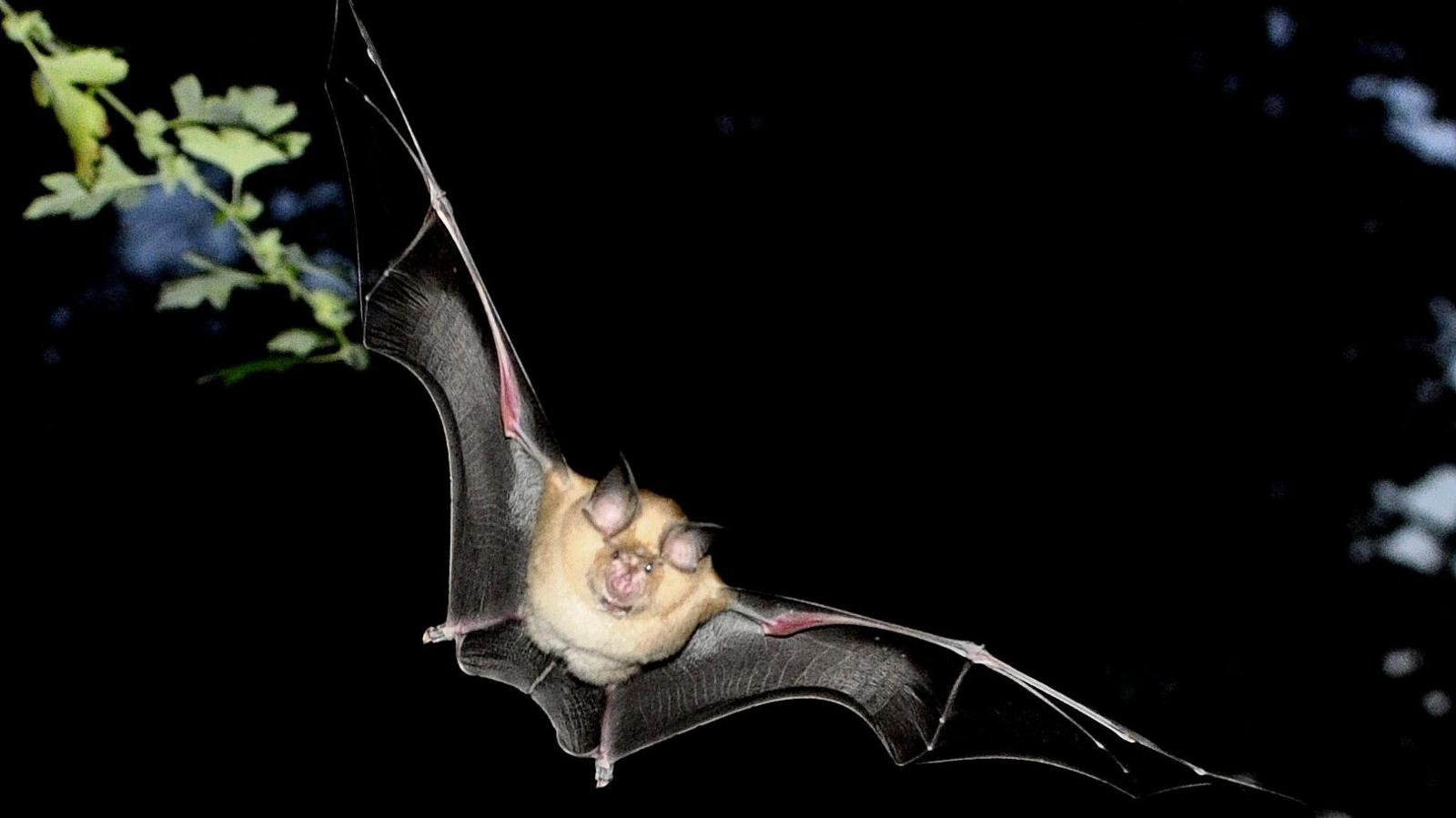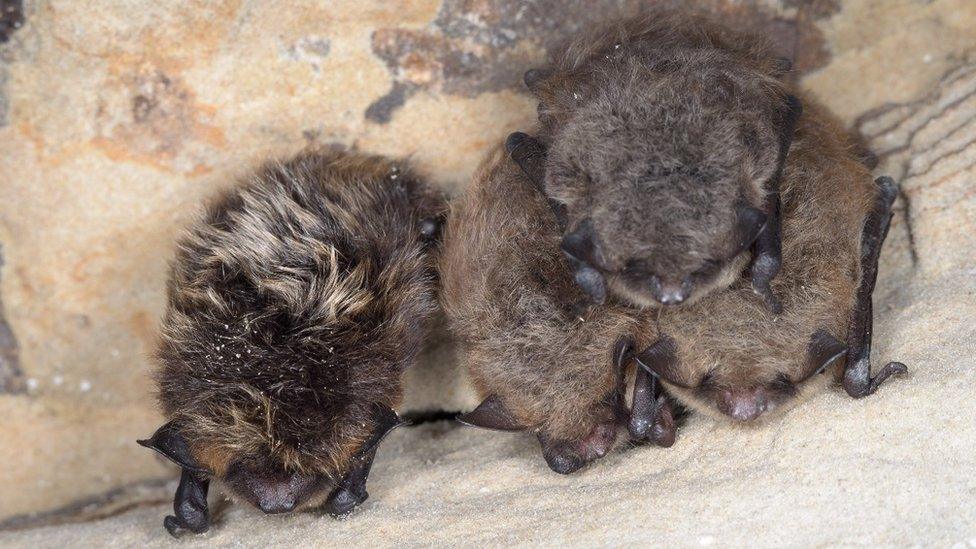'Alarming decline' in horseshoe bats in Devon town

A community interest group in Buckfastleigh said the decline of greater horseshoe bats in the town was alarming
- Published
The number of rare bats in a Devon town has "plummeted", a bat-observing group has said.
Be Buckfastleigh, a community interest group, said the decline of greater horseshoe bats in the town was "alarming".
Director and resident Pam Barrett has been observing the protected species for about 10 years and said her group would normally expect to see around a thousand bats at this time of year.
However she said earlier this year they had counted "as few as 20" greater horseshoe bats in Buckfastleigh.
'Highly protected'
Ms Barrett said: "Buckfastleigh has been the biggest maternal roost of horseshoe bats in all of Europe and it typically has two to three thousand horseshoe bats.
"Normally at this time of year we would expect to see a thousand or so great horseshoe bats emerging and flying quite spectacularly down the rivers.
"But this year has been very different; the numbers have been very small and earlier this year we were counting as few as 20 when we would expect to see 1,000. It has been a little bit alarming."
She said the Vincent Wildlife Trust looked after the roosts and the Devon Wildlife Trust said the bats were a "highly protected" and rare species, external.
'Owls predating'
"There is a likelihood there have been owls predating on the bats which have managed to get into the roosts," said Ms Barrett.
"That may have disturbed the great horseshoes that live and have their babies there and the thinking at the moment is the bats have fled.
"They would have probably gone around June time, so a couple of thousands of bats are somewhere else, probably in South Devon."
She added: "The bat conservation groups are trying to establish where the bats have moved to but it is unlikely that all 2,000 have moved to one roost.
"It may well be they have moved to a number of smaller roosts."

Pam Barrett said a group of volunteers have been monitoring the number of greater horseshoe bats in Buckfastleigh using bat detectors
Ms Barrett has asked any local bat groups to contact the Vincent Wildlife Trust if they have seen an increased number of greater horseshoe bats in their area.
She said a group of volunteers were using bat detectors to try to establish how many were remaining in Buckfastleigh as they are "active" in autumn before hibernating over the winter.
"We are really keen to see these bats return because they will be very much missed if they don't return to the roost," she said.
"It just shows how important the roost is to the population in Britain.
'Distinctive features'
Ms Barrett said the greater horseshoe bat was a rare species, measuring up to around 10 inches across. She said it moved more like a bird, such as a starling, as it glides rather than flaps.
She added: "Greater horseshoes are called that because they have an adapted flap of skin around their noses which allows them to, I believe, focus their echolocation and tune into their prey.
"They are very distinctive, not that you will see their faces when they are flying past you."
Follow BBC Devon on X (formerly Twitter), external, Facebook, external and Instagram, external. Send your story ideas to spotlight@bbc.co.uk, external.
Related topics
- Published7 May 2024

- Published10 January 2024

- Published11 April 2024
